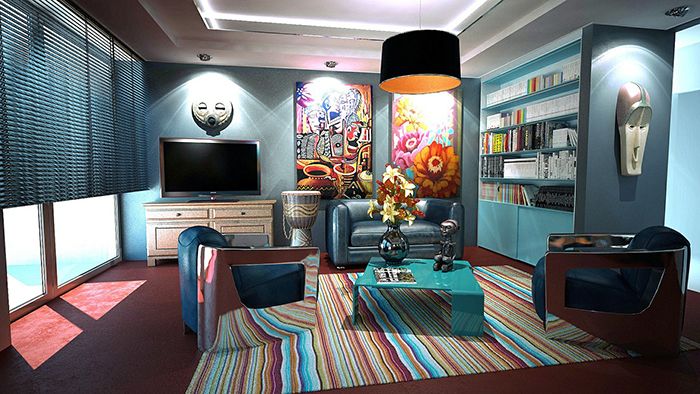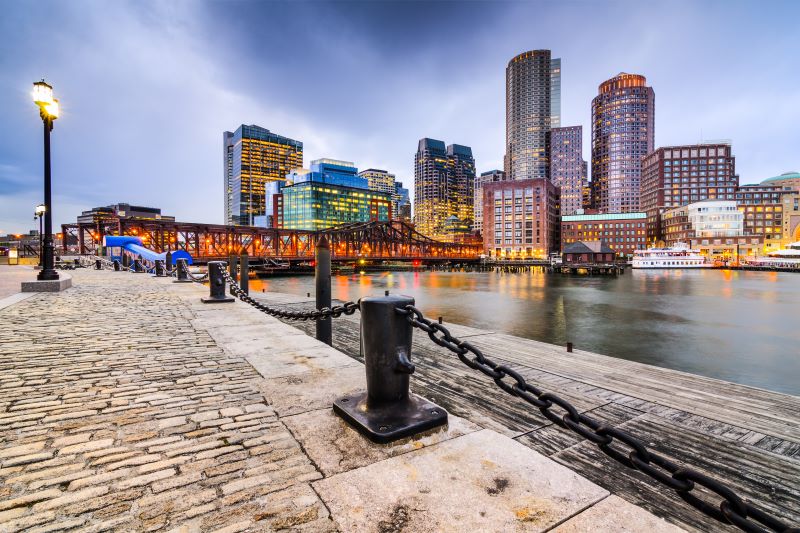
Can you name at least one challenge of living in a tiny apartment? Space or rather the lack of space. Sure, you’re saving money on rent since it is not as high as the one for a bigger apartment. But the trade-off is living in a cramped space that makes it difficult to live comfortably. How can you enjoy living in your apartment when you can’t even walk around the furniture without constantly bumping into them? How can you have storage when you don’t even have enough room for shelves or drawers?
You are having an interior design emergency and you’re trying to figure out how to make your living space feel big. You go through a list of possible solutions you can think of to solve this problem. That includes exchanging huge furniture for a small (or at least apartment-sized) furniture. While this solution is doable, there are other options you should consider to make your living space larger. Here are the following top 10 tricks to make your apartment look and feel nice and big.
1. Built-In Storage
Your apartment may be too small to have a lot of storage, but this is not a cause for alarm. There are some furniture that comes with built-in storage. One perfect example is a bed with built-in storage. You can store blankets, sheets, and pillows underneath the bed instead of in the closet where they take up so much space. Another great example is a built-in sofa where you store your items while resting or watching TV. With the furniture, you don’t have to deal with cluttering due to lack of storage. You can purchase furniture that already comes with built-in storage at stores such as Ikea. Or you participate in the DIY project of adding storage to your existing furniture if you’re creative (and adventurous) enough. Built-in storage not only makes your space feels bigger, but it also makes it more organized as it solves the cluttering problem.
2. Creative Furniture Layout
Arranging furniture is one way to create more space and avoid bumping into them no matter which way you go. One way to do it is by creating separation between different rooms. For instance, you separate the living room from the dining room by arranging the chairs and sofa in a way that clearly outline the distinction of the rooms. This design trick is especially feasible in a studio apartment. Another way to make your space feel larger is not pushing your furniture against the wall. Yes, it may seem counter-intuitive, but it will actually make your room feel more open with even a few inches of space between the wall and the furniture. The next trick may not involve furniture arrangement, but it can help with the space problem. Using furniture with exposed legs, like sofas, create more openings than the ones with holstered-covered legs. Thus, they are useful in making the room feel more spacious. Testing out different arrangements of your furniture helps to figure out the best layout for making tiny spaces not so tiny.
3. Mirrors
Mirrors do a great job of creating an illusion of space and adding style to your apartment. Larges one, especially, can add depth and dimensions when they reflect and enhance the light. The best places for the mirrors are either on white and well-illuminated walls; across from a window that let in natural light; or behind certain furniture such as a chest or an end table. Interior designers use mirrors in their work to give the illusion of space for many years. This goes to show you how effective the mirrors are in making your living space appear larger.
4. Paint in Light (or Dark) Colors
Interior design experts always suggest painting walls with light colors to make tiny rooms look big. Light colors always do a great job of making the space feel bigger and more open. Painting the trim and walls in same color also does the trick. There is a question of whether you have to use light colors. The answer is basically no. Dark colors can work just as well as light colors if you use them correctly. For instance, you can add a light-colored furniture and accessories against a dark-colored wall. It will create more depth in the room, not making it look small.
5. Stripe Décor
If you like stripes, you have one more reason to add it to the design of your living space. Striped rugs help expands the wall and making your room appear longer. You can also paint the stripes onto the walls. Horizontal stripes make the room look expansive while the vertical stripes make it feel taller. Painting light colored stripes to dark walls does the trick as well. Don’t worry if the stripes on the walls make your room look awful. If you use the right colors and execute the stripes properly, your home will look like it’s been featured on HGTV or Better Homes and Garden. In other words, you can’t go wrong with stripes.
6. Multi-Purpose Furniture
When living in a small space, you want your furniture to serve many purposes, making it easier for you to accommodate all your living needs. Multi-purpose furniture is cost effective in many ways. If your existing furniture serves its dual purpose, you don’t need to buy a new one. Even if you do need to make a purchase, it saves you money in the long run because you don’t need to buy separate furniture for each function. The best options include console table you can use as a desk and or a sleeper where you sit during the day and sleep during the night. Storage helps furniture and accessories providing many uses in your apartment. If you have a really small dining room, you don’t need chairs for seating; instead use a bench with storage. If you need something practical to hang items on the wall, you should use floating drawers instead of floating shelves. They store items both on top of the shelves and inside the drawers.
7. Natural and Artificial Lighting
Lighting has the greatest impact on interior design and if it’s done right, it can change the perception of a living space particularly making it feel larger than it is. There are ways to add lighting without taking up too much space or making it feel smaller. Desk lamps, wall scones, and floor lamps are just few of the lighting that can do the trick because they are either small, narrow, or both. Track lighting (if it comes with the apartment) provides beautiful light and takes up less space. If you’re into natural lighting or you just want to save energy and money on the utility bills, sun is another good option. It eliminates shadows that make a space feel small. If a mirror is placed across a window, it enhances the sun by reflecting it from a window. Your apartment will feel airy and open with enough sunlight beaming into it.
8. Curtains
Curtains do many wonders to your space. They add style to a room. They block or filter out some of unwanted light. They protect your privacy. They make your living spaces feel roomier. How do they do that? The trick is to hang them higher than the window and it will give a room more height and dimension. If you want, you can take the curtains all the way to the ceiling. This technique is especially useful for rooms with low ceilings. It helps draw the eye upwards making the space look less cramped and the ceiling look high. What if you don’t want a curtain or can’t afford to get one? In this case, you should use either Roman shades or blinds. They make the room less crowded which leads to more space and you will have privacy simultaneously.
9. Create a Focal Point
Choose one aspect of a room to highlight something that is visually interesting. The eye will be drawn to this focal point immediately with less emphasis on the room’s small size. Some of the most common focal points that home owners and apartment tenants alike use are fireplace, a wall, and artwork. When using a wall as a focal point, you either paint it or cover it with a wallpaper or a wall décor. When using art to help draw in the focus, you can have one large art piece or you can have multiple artworks. Another idea to think about is placing different framed artwork and mirrors on a brightly colored wall. Whether you use many artworks only or mix them with other accessories, make sure they don’t clutter the wall and make it look messy.
10. Rugs
A rug is a perfect accessory to make a room feel big while covering the floor and adding style. If possible, use a large rug that goes beyond the furniture. It makes the eye draw wider and make the living space appear big especially when you place it under a sofa, coffee table, and other furniture. A small rug, on the other hand, makes the space feel small or limited. You can also use multiple rugs in one space to separate one room into smaller spaces. As far as the type of designs a rug should have, stripes can definitely make a difference in how spacious your apartment looks. However, other designs can work as well.
With these top design tricks to make your living space feel larger, you’ll be relieved knowing you can make it work. If you are looking for your dream apartment and the one you really like does not have a lot of space, don’t worry about it. Giving up on a spacious floor plan is not a deal breaker. Instead use the small floor plan as an opportunity to put your creativity to use. You will not feel as cramped as you did before and you can live comfortably. Your place is small and yet it feels spacious. What’s not to like?

Demetrios Salpoglou
Published May 3, 2019
Demetrios has pulled together the largest apartment leasing team in the Greater Boston Area and is responsible for procuring more apartment rentals than anyone in New England – with over 130k people finding their housing through his services. Demetrios is an avid real estate developer, peak performance trainer, educator, guest lecturer and motivational speaker.










